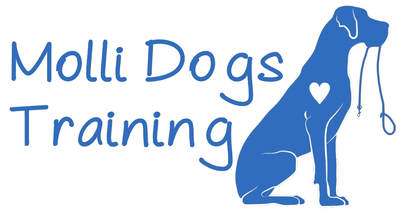Today I want to discuss canine stress indicators.
Understanding the signs of a stressed out dog is critical when training and working with any dog. A dog that is too highly stressed is unlikely to be successful able to learn anything. Trying to force an overly stressed dog to work will likely even set training back. I’m sure you’ve heard someone say “the dog just bit out of the blue!” Not True! A dog will always give some sort of signal that he or she is feeling uncomfortable or stressed, however, more often than not, these signals will be silent. Learning to understand how dogs communicate stress is one of the number one ways to prevent dog bites.
Minor Stress Indicators:
- Shaking off when not wet. This is one of the most common ones I see. This is pretty much the equivalent of “shaking off” the stress. This is a technique dogs will use to help calm themselves down when they start feeling a bit stressed. You will see this a lot during doggy play. A dog will stop mid play, shake off, then continue to play. You may also see this in training sessions if a dog is beginning to feel frustrated by something. This is a pretty common behavior and is perfectly harmless.
- Sniffing ground when there is nothing to sniff. If you are in the middle of a training session or in a situation that may induce stress you might see your dog stop and randomly start sniffing at nothing. Basically the dog is feeling stressed or frustrated and is needing to temporarily do something else to diffuse the situation. It is the same as people pretending to get a text or look at their phone during a stressful situation. This is also something that can be used as a calming signal.
- Scratching self when not itchy. This is pretty much the same as sniffing the ground when there is nothing to sniff. The dog just needs to do something to temporarily diffuse the situation. It is the same as a person fiddling with their shirt or tie when they are feeling stressed.
- Yawning. This is similar to Shaking off when not wet. The dog is feeling stressed or anxious and is using yawing as a way to self soothe. This is also commonly used as a calming signal.
Mid Stress Indicators:
- Panting when he or she is not hot.
- Whining. This is one of the few vocal cues you will get from a dog to let you know that they are feeling stressed or anxious.
- Lip Licking. This is when you see a dog licking their lips repeatedly. This is a clear signal that the dog is stressed and not comfortable with what is going on. This is most commonly shown when something is being done that the dog wants to stop. This is also something that can sometimes be used as a calming signal.
- Won’t take food or treats.
- “Faints” or lies down and refuses to move
- Won’t look at owner. This is usually a sign that the dog is either upset with the owner or upset with what is going on around him or her.
- Won’t follow known obedience commands. Many people often mistake this for stubbornness and will punish the behavior, causing the stress to escalate. It is important to recognize the difference between stubbornness and stress. If your dog is exhibiting any of the above behaviors as well as refusing to follow know commands, then it is a safe bet to say it is because your dog is stressed.
- Hackles up. This is when you can see the hair along your dogs back stand up. This is something you will only ever see in stressed, unconfident dogs.
Major Stress Indicators:
- Dilated eyed/whale eye(whites of eye very visible). This is a dog that is extremely anxious and uncomfortable.
- Freezes/won’t move. Any freezing or tensing in the body is always a precursor to a more severe behavior. This is when your dog is making the decision to either go into the fight or flight mode.
- Focusing /staring and not looking away from stimulus. This is almost always followed by an attack. If you see your dog doing this it is important to do whatever necessary to break that stare. Backing away from what your dog is staring at and leaving the area is best.
- Growling. This is one of the few verbal cues a dog will give to let you know that he or she is stressed. Many owners reaction to growling is to immediately punish it. Unfortunately all this does is teach the dog that communication doesn’t work and will often cause the dog to skip this phase and go straight to biting. I’m not saying to praise growling in any way. You should simply acknowledge it and address the situation appropriately to help your dog feel more comfortable. If you are not sure how to address the situation you should contact a trainer experienced in this area to help you.
- Showing teeth. A dog showing their teeth is trying to look scary. They are telling you that they are not happy and are willing to bite if they have too.
- Holding breath. This is usually followed by a warning lunge or an attack. If you see your dog holding their breath it is best to get them out of the situation as quickly as possible.
- Trying to leave the area or move away from something. If your dog is doing this, it is best to listen! Trying to force your dog to stay in an area where they are clearly uncomfortable will likely only cause the fear to intensify and may cause the dog to bite. Don’t run away, just calmly and casually leave the area until your dog is comfortable and able to work again.

 RSS Feed
RSS Feed